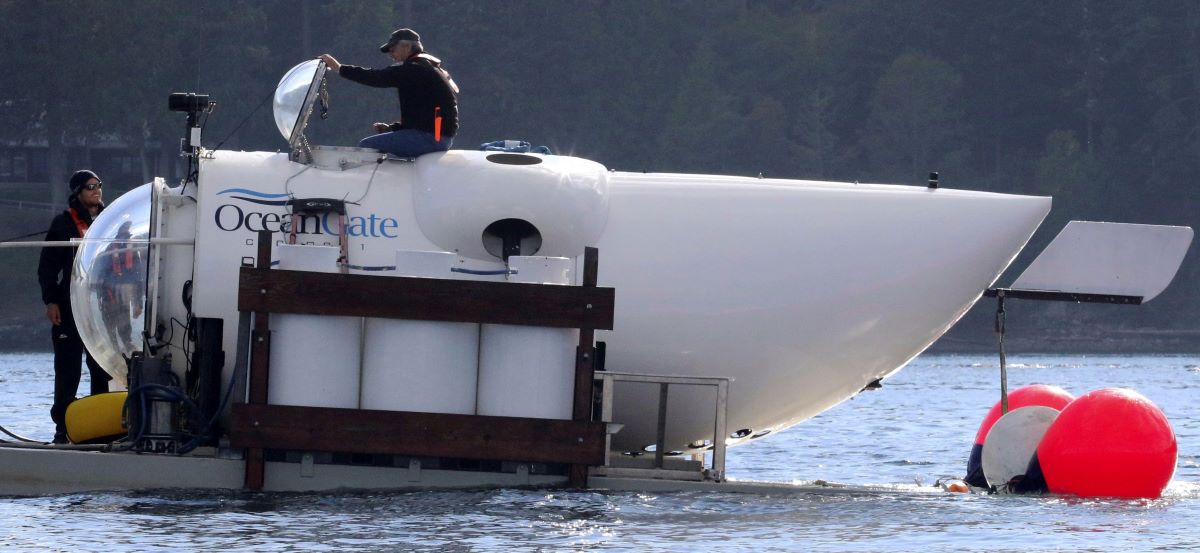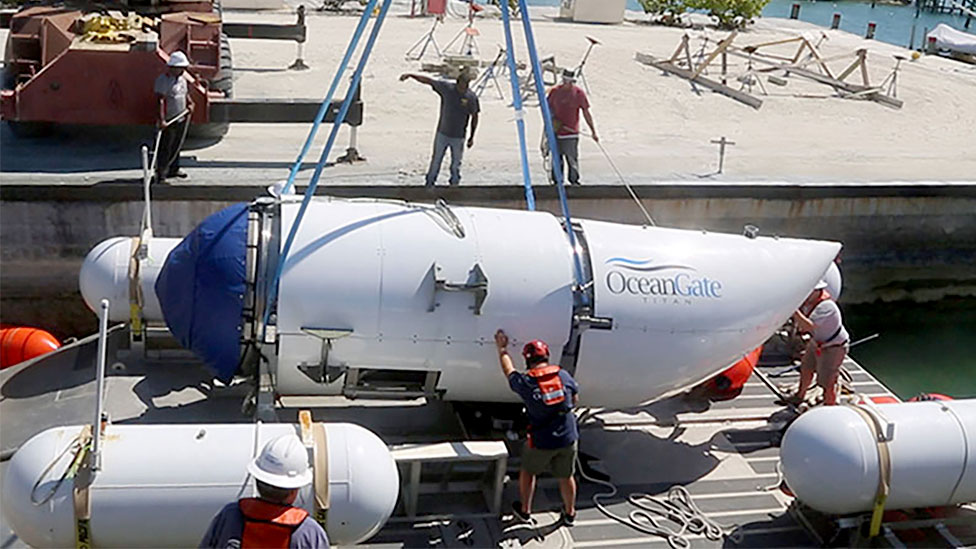Crews continued their search for a submersible that went missing while transporting five people to the Titanic wreckage, with ongoing efforts to locate the vessel, the U.S. Coast Guard reported Wednesday.
The Coast Guard noted that a Canadian search plane detected underwater noises in the search area on Tuesday night.
Crews are focusing their efforts on pinpointing the source of these sounds. Coast Guard Captain Jamie Frederick confirmed that a plane also heard the noises Wednesday morning.
“Regarding the noises, we don’t have a definitive explanation,” Frederick said during a briefing Wednesday. “…We are concentrating our search in the area where these noises were detected.”
He mentioned that the team currently has two remotely operated underwater vehicles (ROVs) actively searching, with additional ROVs expected to join the operation on Thursday.
Search flights are scheduled to continue throughout the day and evening, Frederick added.
The Titan submersible, operated by OceanGate Expeditions, was going to the Titanic wreck off the coast of Newfoundland, Canada. A photograph from OceanGate Expeditions shows the Titan in an undated dive.
Carl Hartsfield from the Woods Hole Oceanographic Institution indicated that the noises have been described as banging but noted the difficulty in identifying the exact source underwater.
“They need to piece together the entire picture and rule out potential man-made sources other than the Titan,” Hartsfield said.
“…The team is focusing their search in the right area, and by continuing analysis and looking for different patterns, they’re doing everything possible with the best resources available.”

The submersible disappeared on Sunday, prompting a substantial search effort by both U.S. and Canadian teams.
As of Wednesday afternoon, five vessels were searching the water’s surface, with that number expected to increase to ten within the next 24 to 48 hours, according to Frederick.
The submersible, measuring 21 feet, lost contact with a Canadian research vessel about an hour and 45 minutes into its dive on Sunday morning, approximately 900 nautical miles off Cape Cod, Massachusetts. It was scheduled to resurface that afternoon.
The search area has expanded to roughly twice the size of Connecticut, with depths reaching up to 2.5 miles, Frederick said.
Despite the challenging circumstances, Frederick expressed continued optimism for the search on its third day.
“In the midst of a search and rescue mission, there’s always hope,” he said. “That’s why we persist.”
Frederick noted on Tuesday that the sub might have around 40 hours of breathable air remaining, but he did not provide an updated estimate during Wednesday’s briefing. He emphasized that the remaining oxygen is one of several factors being considered.
“This is a search and rescue mission, 100%,” he stated. “We are fully committed to the search and will deploy every available resource to find the Titan and its crew.”
Frederick acknowledged that search and rescue operations sometimes end without success, leading to “tough decisions” about continuing efforts.
“We’re not at that point yet,” he said. “But if we continue searching, we might reach that decision, though we are not there yet.”







Leave a Reply